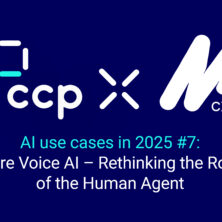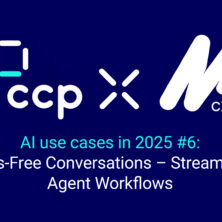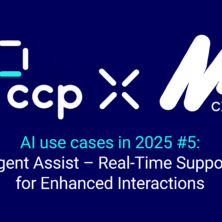
As we move into the endemic and markets recover, businesses are looking to optimise their contact centre operations. Selecting the right customer engagement technology solution has become crucial. Cost effective customer acquisition and a reduction in ‘cost to serve’ are both desirable goals but achieving them can be a challenge if you don’t have a true understanding of available technologies and their alignment to your existing environment.
We asked a number of leading industry experts a range of questions on the impact of the Bot and the types of technology that are available to underpin operational performance, including the difference in programmable products vs those that have minimal learning input before effectively replacing their human equivalents.
Will AI and Bots take over from humans as the point of contact for customers?
Natalie Calvert is the founder of CX High Performance, she has worked with over 100 companies to improve results and credits the Covid pandemic with accelerating technological change: “The bot will be the biggest disruptor of customer contact. Covid has driven digital transformation and has turned things around from the pyramid of contact being voice – email – chat before the pandemic to chat – email – voice’. Huge numbers of people have been forced or encouraged to be much more comfortable online.”
Natalie continues: “Hybrid working is also going to change our sector considerably… It has highlighted the massive gap in knowledge management. In the office, agents can put their hand up to request help. At home in the kitchen, there is nobody available to give that assistance. We have seen a rise of complaints and a lot of employee wellbeing issues can be put down to the stress that’s involved in working in isolation.”
She concludes: “The third big disruptor has to be Bots. AI will change how we’re operating. Not just from the customer point of view by making things easier, quicker and faster but also from an employee experience. The routine transactional stuff, which makes up around 50% of the workload for most organisations, will all start to move and the Bot will be the big disruptor. To run a piece of tech at a cost of £2 per hour for a bot, compared to ten times or more than for a human being, opens up the chance to reimagine what we’re doing and how we use our people and technology. This is key for us, our customers and our organisations.”
Nathan Smith is the MD and founder of Gabba, an organisation that builds chatbots to drive leads, handle customer service and reduce costs. He agrees with Natalie:
“If you want to see what’s happening and what the future holds, look at how people are communicating. If you’re under 35 right now, your primary channel is chat. In the next five years, this will only increase, regardless of demographic or location. Chat includes SMS, Whatsapp, Messenger and other apps across the board. Companies trying to engage without a chat provision are going to struggle.”
Nathan explains: “Many of us will remember that there was much argument about what used to be called Digital 2.0, which we now call Social Media. Some organisations wrongly thought it was never going to affect them.”
He adds: “If you are under 18, you might well prefer to peak to a Bot than a human. The keyword now is Omnichannel.”
Up to 74% of users prefer to use chatbots to find the answers to simple questions.
AI and Bots are not always the same. It’s important to distinguish between linear processes and intelligent design. Linear automated processes are successful in many applications which have a defined start, middle and end, for example obtaining specific data for customers to process a transaction. Delivering a great customer experience in an unstructured environment, however, is less simple and if automation is to be successful, flexibility is needed.
Where AI offers a true glimpse of the future is when it is used to learn from an existing knowledge base and to provide answers to unstructured questions. Louis Halpern is Chairman of Conversations By Ami, an organisation developing AI tools to help organisations power chats and deliver customer and employee conversations based on machine learning. He points out and example of the differences between ‘command and control’ process-led systems and true AI: “We took a company’s knowledge management data and let the AI product read it with no structure applied. It’s not yet perfect but their agents found it useful within a short three-week trial. Agents have been able to find the answers to questions quickly, with the system using the information in the knowledge base in new ways to help agents with the customer conversation.”
Louis continues: “In another example, our tool read 20 CVs provided by a client. We then told it that we were looking for undergraduates and it was able to find examples that met our criteria. It had learned about degrees, Masters and other qualifications by reading the CVs we’d supplied in the dataset. This learning of unstructured information by machines opens up an exciting future for systems-based customer contact.”
Louis states: “It’s what technology can do for you, not what you can do with technology.”
By 2025, 80% of major organisations will need to have a technology focused centre of excellence or skills resource.
Gartner, Chatbot initiatives and enterprise strategy, 2020
Technology will need to be core to organisations in the customer contact space. Louis puts it succinctly: “It comes down to what technology can do for you and your clients, not what you can do with technology. That’s a massive difference.”
Of organisations identified as high performers, 48% had deployed Bots, whereas of those identified as low performers, the proportion using Bots was only 26%.
Salesforce research
By implementing Bots, AI and the right automation technologies successfully, the relative costs of using technological tools mean that in some businesses up to 90% of transactions can be handled by technology at around 15% of the costs of a human agent. This leaves plenty of budget available to support and train teams of excellent agents who will deal with the exceptional cases and deliver the highest possible quality experience to customers.
As automation develops, the opportunities to deploy it across the business magnify. Among many people within our industry, the most common feeling about automation is that it shouldn’t be used in complaint handling. However, our experts all agreed that there is no department or enquiry type that cannot be improved by the right technology. The key is learning when to involve human ‘super agents’ and enabling automation tools to be improved by better design or continued machine learning.
71% of businesses agree that scaling conversational support will allow their organisation to stay competitive or become an industry leader.
Forrester – April 2021
It seems clear that the businesses who want to be successful will be expanding the automated contact capabilities. If your business is falling behind, now is the time to take action.
Who can you talk to about the options?
Contact Centre Panel works with a network of over 200 expert partners including contact centres and technology providers. We find solutions to the greatest challenges facing the customer contact sector, whether that’s finding contact centres with the skills and resources to meet your needs or helping to remove the complexity and risk from technological decisions. We can help.
We offer solutions to help your business and customers. Our independent team of experts are driven to help you to build better partnerships and to improve the customer contact sector’s performance for everyone who works within it.


